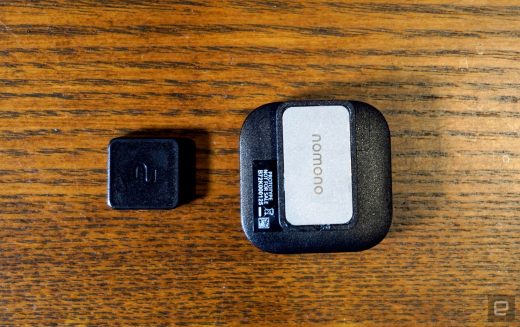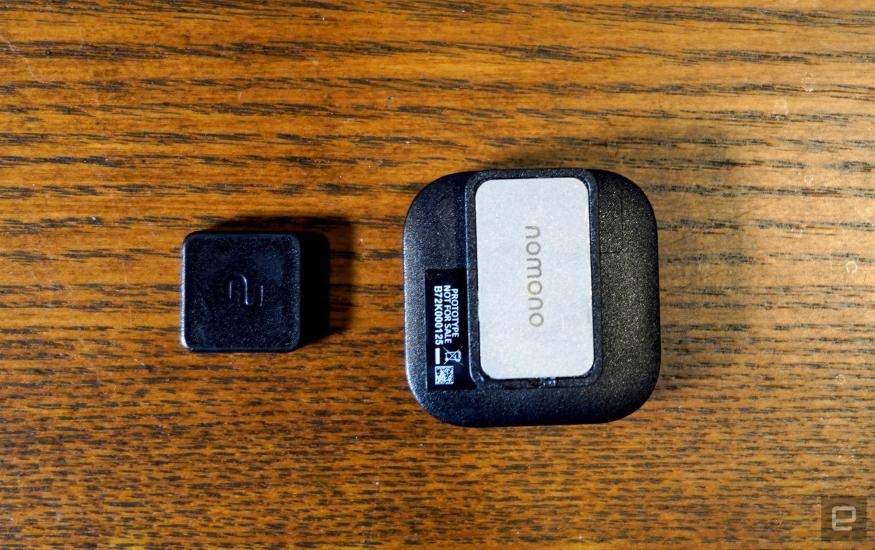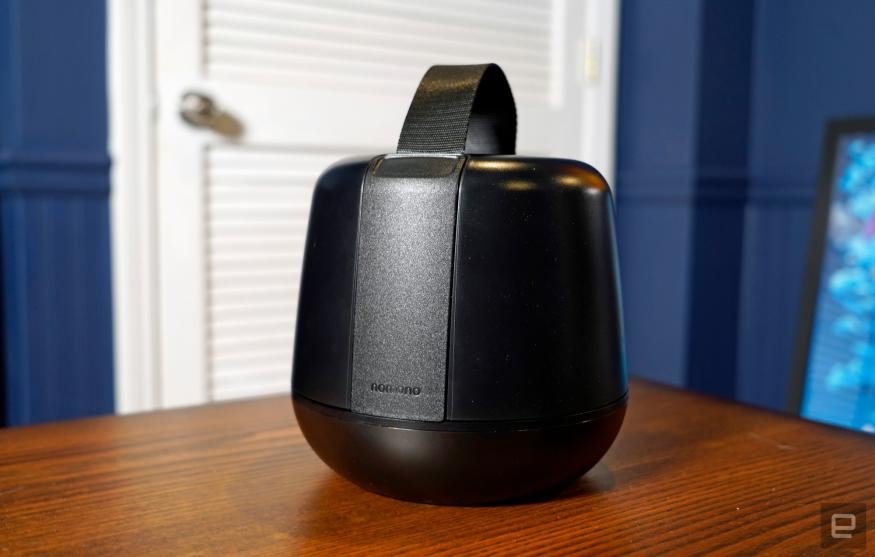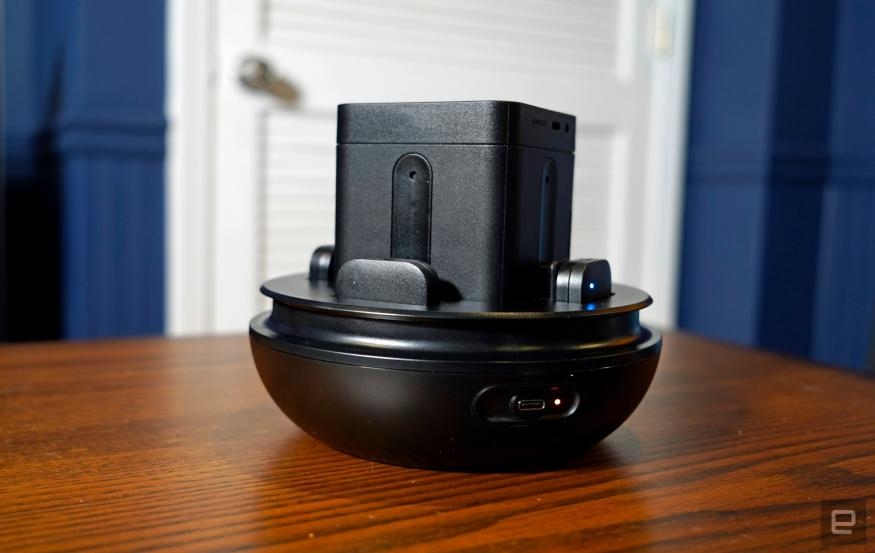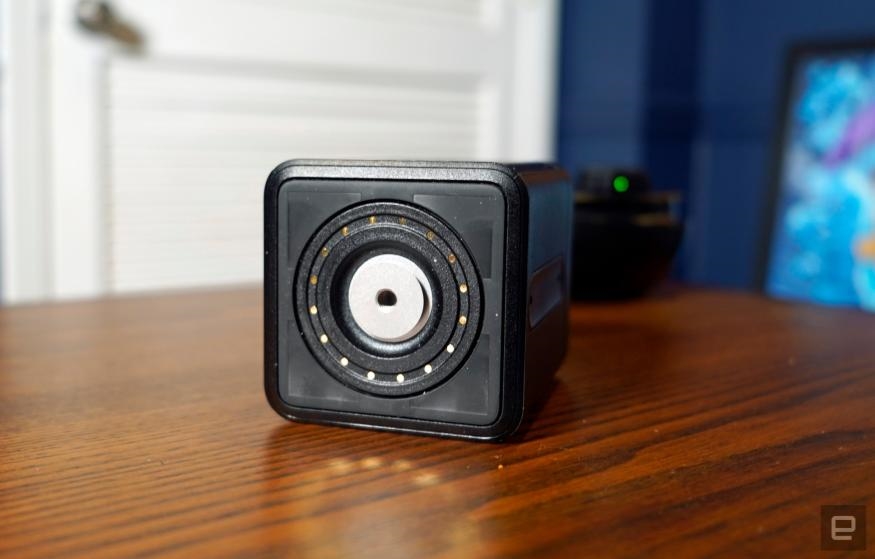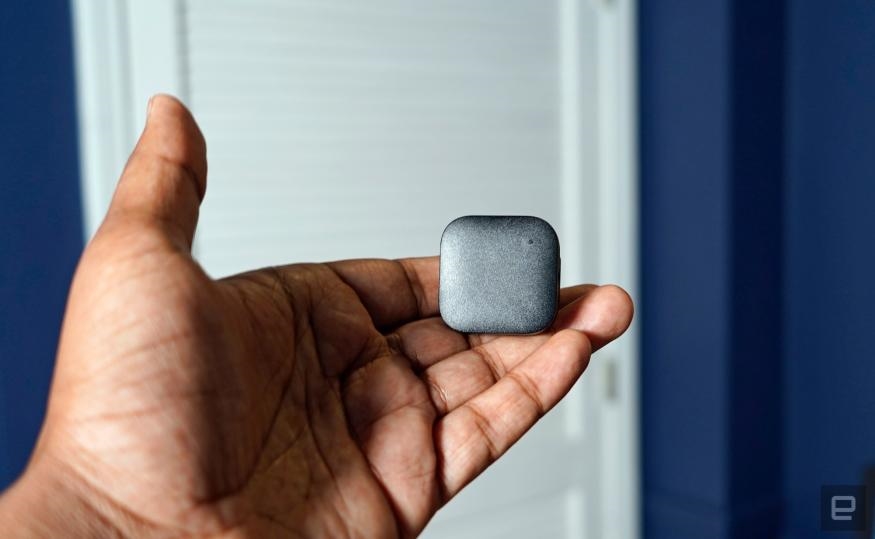A $2,490 wireless podcasting kit is absurd, but at least Nomono’s sounds great
“A $3,000 podcasting kit, in this economy?” That was my first thought when I learned about Nomono’s portable recording setup last year. Since then, the price has dropped slightly to $2,490. But my main concern remains: Who needs this thing when you can get a small audio recorder and lavalier mics for far less? Still, I was intrigued.
Nomono’s kit includes four wireless lav mics, as well as a space recorder for room tone and spatial data, all of which charge in a portable carrying case. Your recordings are automatically uploaded to Nomono’s cloud service, where you can optimize their audio quality (and eventually edit them in your browser). As someone who’s been podcasting regularly since 2008, the notion of an all-in-one kit that can easily tackle local recordings sounds like an absolute dream. Nomono’s kit has the potential to be something the podcasting industry has needed for years, but can the company justify its incredibly high price?
Gallery: Nomono podcasting kit
Clearly, this isn’t a product aimed at everyone — it’s certainly not for beginners, and I’d argue it’s far beyond the scope of what most podcasters actually need. But after testing Nomono’s kit for a few weeks, I can see how it could be helpful for recording studios and companies that need flexible podcasting solutions. It doesn’t require much training to use, it delivers high quality recordings, and it can be deployed just about anywhere. For those folks, spending $2,490 on Nomono’s kit may make more sense than having an engineer dedicate time to every single recording. Add in a cloud subscription, which can cost as much as $29 a month, and it definitely doesn’t seem like something for mere podcasting mortals.
You can tell Nomono is striving for Apple-level design simply by looking at its hardware. Even though everything is made of plastic, nothing feels cheap. The egg-like charging case has a cloth handle at the top as well as a USB-C port. Its two halves snap together with secure clasps — flip those open, take off the top and you’re presented with four lavalier microphones around the space recorder. It’s like an adorable podcasting bird nest.
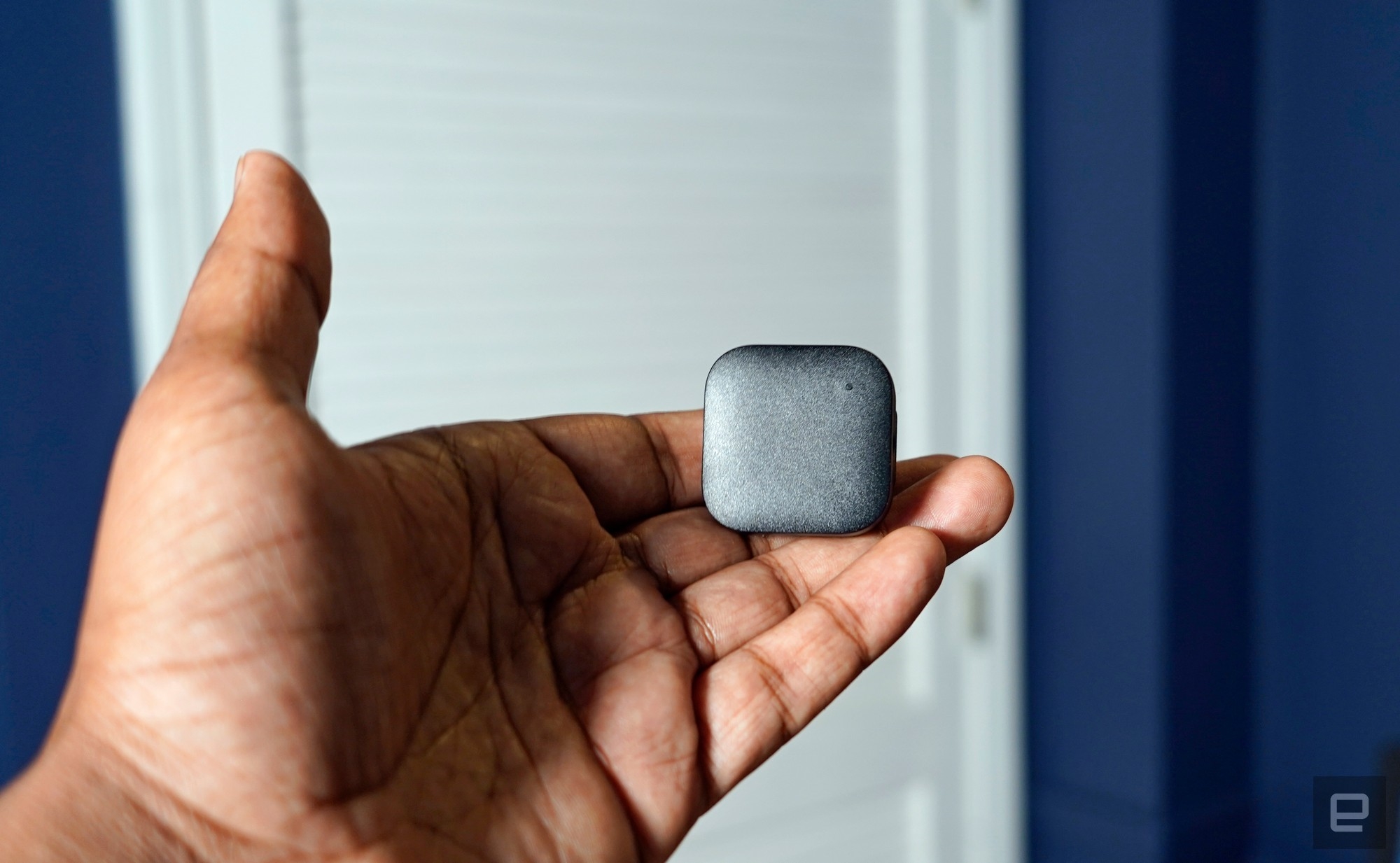
The space recorder serves as the hub for the entire Nomono experience: It’s a rectangular device featuring omnidirectional microphones for capturing room tone with spatial information (it can tell where everyone is located during a conversation). There’s a small screen at the top displaying the battery levels of all the connected lavs, as well as prominent recording and directional buttons. On the side, it features a USB-C port and a 3.5-millimeter headphone jack. As you’re capturing audio, the space recorder takes in data from the lav mics and uploads it to Nomono’s cloud once your session is done.
The lavaliers aren’t nearly as unique: They’re small, indiscrete square pucks featuring four LED colors (helpful for distinguishing each track). They grip onto your clothes with small magnets — making them easy to put on, but potentially just as easy to slip off. The lavs never fell off during my testing, but I constantly worried about knocking one off and losing the tiny magnet. (Nomono includes some additional magnets in its bundled accessory kit, which also has windscreen sleeves for the lavs and space recorder.)
Setting up Nomono’s hardware was relatively straightforward: After charging the case, I downloaded the Nomono Companion app, created an account, and paired the kit to my phone. The app shows battery levels for the lav mics and space recorder. To capture audio, you just need to remove the space recorder and at least one lav, then hit record. That process was surprisingly fast and reliable; I was typically able to get recordings started in under 30 seconds.
Wrapping up a session is mostly dependent on your internet connection. It took under 60 seconds for a 90-minute recording to get uploaded, and then I had to wait a few more minutes for Nomono’s cloud to process the upload. It was far faster for short recording tests, just be prepared to wait a bit if you’re planning to push lots of audio. Nomono’s hardware delivers 16-bit 48kHz WAV files for each lavalier, as well as an ambisonic WAV file (with up to four tracks) from the space recorder.
The quality of those recordings are crisp and detailed even in slightly noisy outdoor spaces. The lavs don’t sound nearly as rich or nuanced as a premium dynamic or condenser microphone, but I didn’t really expect them to. I’d consider them on-par with other wireless lavaliers I’ve used during video production (our podcast producer, Ben Ellman, described the sound as being ideal for video shoots). A conversation with my wife also sounded surprisingly clear, with none of the crosstalk issues or echoes I’ve encountered with cheaper multi-mic solutions.
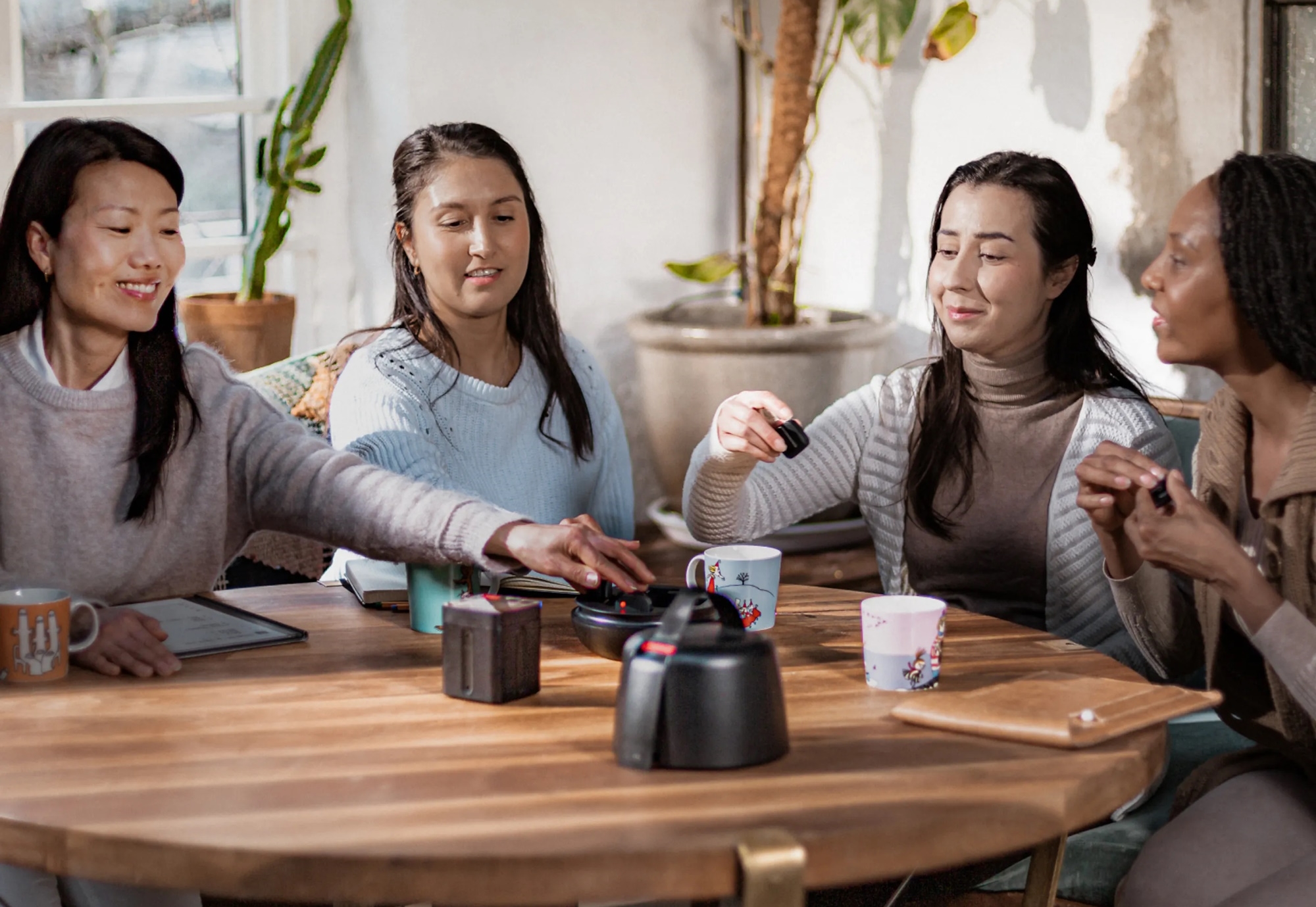
To give your recordings a bit more polish, Nomono also offers three levels of enhancement through its cloud platform: on the light end, it features a high-pass filter, cross-talk reduction, notch EQ filter, de-noising and de-essing (for removing harsh “S” sounds and other sibilants). Medium enhancement adds loudness normalization, a tone-shaping EQ and adaptive level, while full enhancement goes even heavier on the latter two features. While you can still download pure, unfiltered tracks, these enhancements are useful for the less audio savvy.
Eventually, you can choose to spatialize your recording through Nomono’s online platform, which makes each audio track sound like they’re coming from different directions (depending on where the space recorder was placed during the session). That feature wasn’t available while I was testing the kit, and to be honest, it’s also not something I’d ever consider using in a podcast.
Nomono’s full audio enhancement did a decent job of cutting down highway sounds and other street noise while I was recording in front of my local Starbucks (see above), but it also made my voice sound a bit tinny and compressed. Basically, don’t expect any miracles. While It’s useful to have simple ways to cut down background noise, you’ll still need to find a relatively quiet recording space to capture the best audio. (Otherwise, why even buy such an expensive podcasting kit?!)
The company plans to launch its online editor by the end of 2023, which could also potentially include the ability to edit spatial recordings. Since this isn’t exactly a consumer solution, I’d bet that most people buying Nomono’s hardware already have more sophisticated ways to edit audio.
Here’s a comparison of Nomono’s lavalier versus the Rode Procaster XLR microphone:
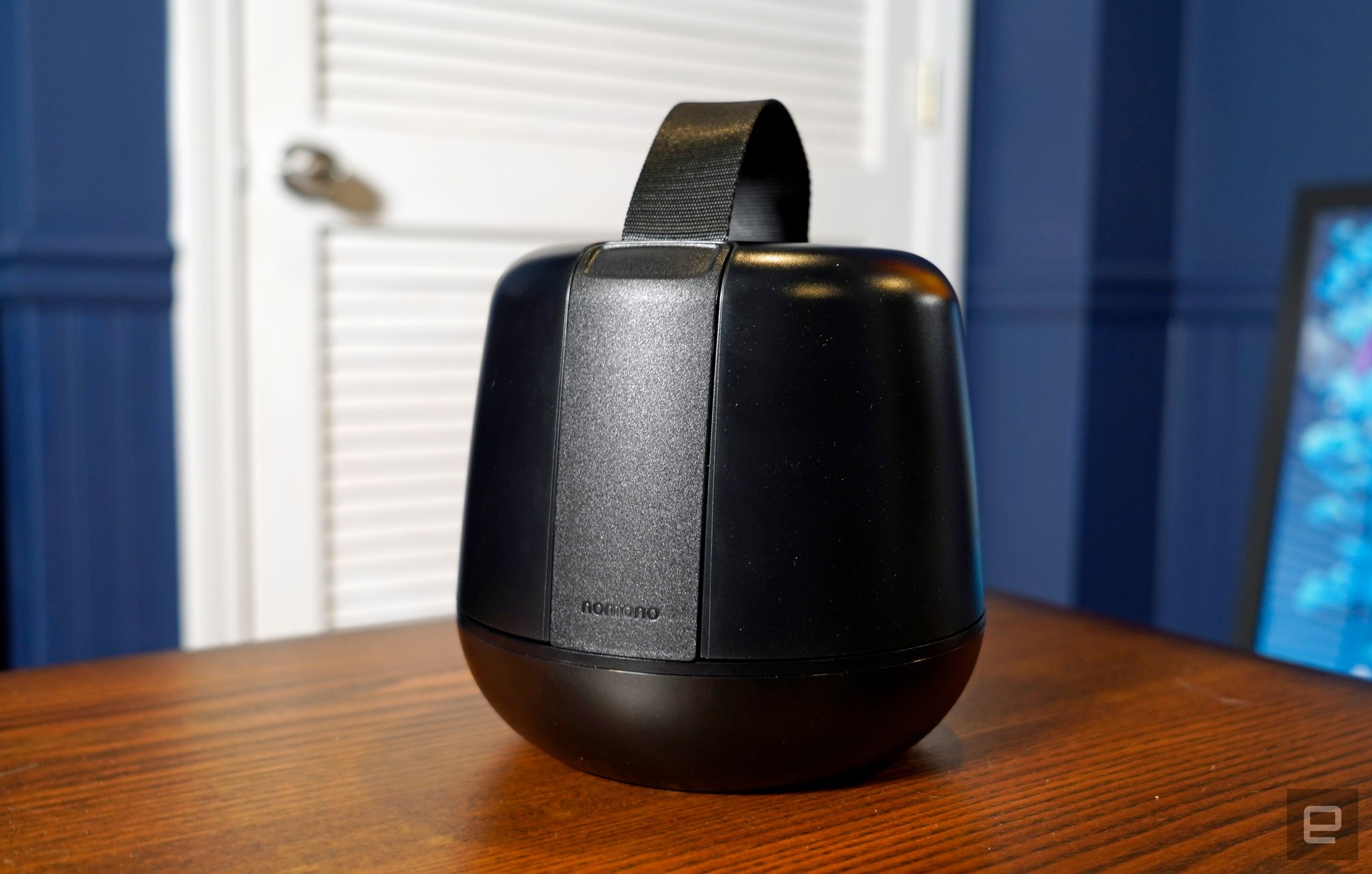
While Nomono’s hardware mostly impressed me, its online platform made it tough to deal with larger files. It took over five minutes for it to prepare a 90 minute track for download (including its bundled spatial audio file). And that didn’t include the time it took to actually grab the file, which would be dependent on your internet connection. I understand the appeal of a seamless online audio solution, but it’s annoying when I know it would be faster to just grab a file from a device sitting right on my desk.
The space recorder didn’t show up on my Mac or PC when I connected to it, unfortunately. Nomono representatives say the company is planning to make offline features available next year, but for now, it’s focused on a cloud-based workflow because they believe it’s the “most convenient and time-efficient” solution for users. That also means livestreaming is out of the question with this kit, though it may show up in a future Nomono product, the company tells me.
I’d have a much easier time justifying Nomono’s high price if I knew I could use its hardware without relying on a website. This isn’t my first time at the gadget startup rodeo: What good is this $2,490 recording kit if the company goes out of business in a year or two?
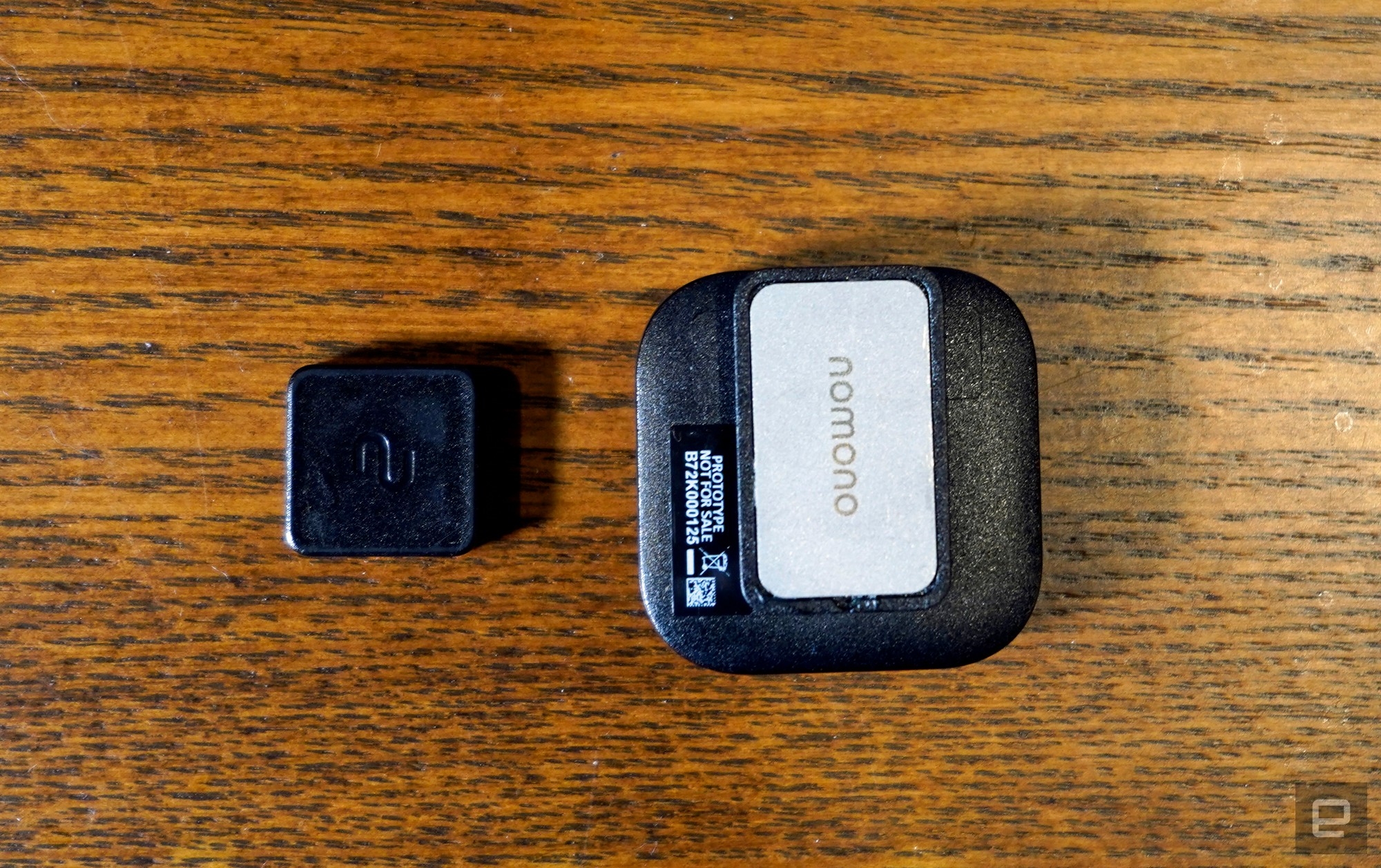
It’s clear that Nomono has developed something special, but it’s hard to imagine this recording kit being the only solution for an audio-savvy company. You’ll still need to have a dedicated podcasting space with hard-wired microphones. What Nomono offers is flexibility: What if you need to record in another room, in someone else’s office, or at a hotel? In those situations, a self-contained $2,490 podcasting kit might not seem so wild.
(16)

